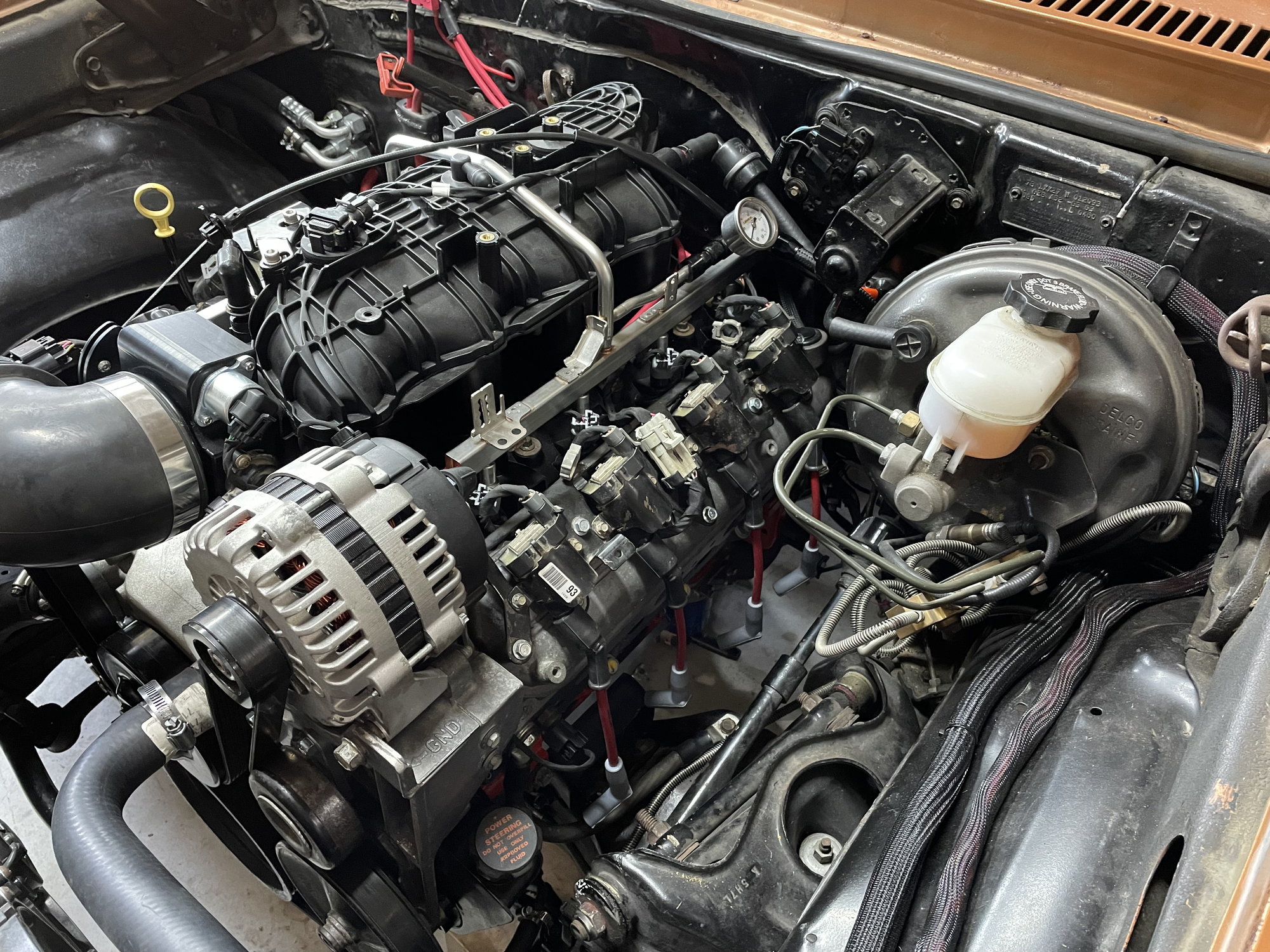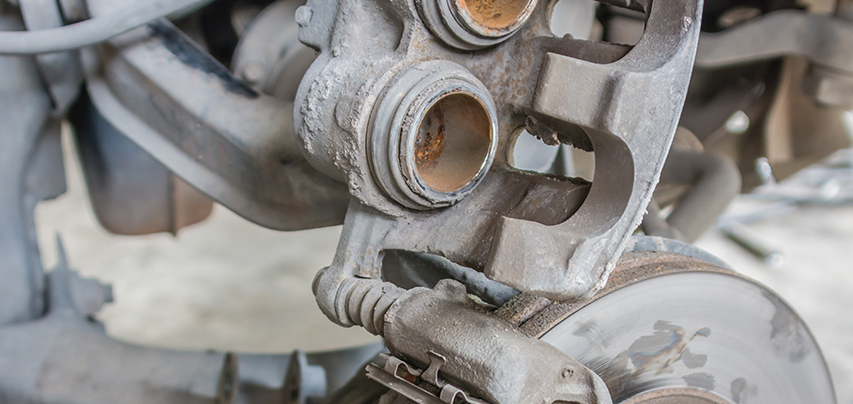Spongy Brake Pedal When Engine Running
If you experience a spongy brake pedal when the engine is running, it may indicate air in the brake lines, leading to reduced brake function. This issue can compromise your vehicle’s braking efficiency and safety.
When you press the brake pedal and notice a spongy or soft feeling, it is crucial to address it promptly to ensure proper braking performance. Ignoring this issue could lead to brake failure and potentially dangerous situations on the road.
By understanding the potential causes of a spongy brake pedal and taking appropriate action, you can maintain the safety and reliability of your vehicle’s braking system. Let’s explore the common reasons for a spongy brake pedal and how to resolve them effectively.
Common Causes Of A Spongy Brake Pedal
In understanding the common causes of a spongy brake pedal, it’s crucial to pinpoint potential issues that may lead to this concerning problem. A spongy brake pedal can compromise the safety and reliability of your vehicle, making it imperative to identify the root causes. Let’s delve into the common culprits that can result in a spongy brake pedal.
Air In The Brake Lines
When air finds its way into the brake lines, it can greatly affect the pedal’s responsiveness and create a spongy feel. This happens as the air bubbles compress, leading to a diminished hydraulic pressure within the braking system. Such a decline in pressure can cause the brake pedal to feel spongy and less effective, potentially compromising braking performance.
Brake Fluid Leak
A leak in the brake fluid system can be a primary cause of a spongy brake pedal. The loss of brake fluid reduces hydraulic pressure, leading to a spongy sensation when applying the brakes. Identifying and rectifying any brake fluid leaks is crucial for ensuring the safety and proper functioning of the braking system.
Worn Brake Components
Worn brake components, such as deteriorated brake pads or a damaged brake caliper, can contribute to a spongy brake pedal. When these components degrade, it can lead to an inadequate transfer of hydraulic pressure, resulting in a spongy feel when engaging the brakes. Regular inspection and maintenance of brake components are essential to prevent this issue.

Credit: www.firestonecompleteautocare.com
Symptoms Of A Spongy Brake Pedal
The symptoms of a spongy brake pedal when the engine is running include a soft or mushy feel when applying pressure, a longer stopping distance, and decreased braking efficiency. It is essential to address this issue promptly to ensure the safety of the vehicle and its occupants.
Soft Or Mushy Brake Pedal
A soft or mushy brake pedal feels less responsive, requiring more effort to stop the vehicle.Reduced Braking Power
Reduced braking power leads to longer stopping distances and a higher risk of accidents.Brake Pedal Sinks To The Floor
When the brake pedal sinks to the floor, it signifies a potential loss of hydraulic pressure in the braking system. If you notice any of these Symptoms of a Spongy Brake Pedal while driving, it is crucial to address the issue promptly to ensure your safety on the road.Troubleshooting A Spongy Brake Pedal
Introductory paragraphA spongy brake pedal can be a worrisome issue for any driver, as it compromises the vehicle’s ability to stop efficiently and safely. Troubleshooting a spongy brake pedal is essential to identify and rectify the underlying problem before it escalates. By following these steps, you can regain confidence in your vehicle’s braking system and ensure a smooth driving experience.
H3: Check Brake Fluid LevelCheck Brake Fluid Level
Inspect the brake fluid level in the reservoir to ensure it is within the recommended range. Low brake fluid levels can result in a spongy brake pedal due to air getting into the brake lines.
H3: Inspect Brake Lines and HosesInspect Brake Lines And Hoses
Visually examine the brake lines and hoses for any signs of leaks, cracks, or damage. Damaged brake lines can lead to loss of brake pressure, causing a spongy pedal feel.
H3: Bleed the BrakesBleed The Brakes
Bleeding the brakes is crucial to remove any air bubbles trapped in the brake lines. Follow the manufacturer’s instructions to properly bleed the brakes and restore firmness to the brake pedal.
H3: Inspect Brake ComponentsInspect Brake Components
Check the condition of brake pads, calipers, and rotors for wear and tear. Worn-out brake components can result in decreased braking performance and contribute to a spongy brake pedal.
Repairing A Spongy Brake Pedal
When the engine is running, a spongy brake pedal may indicate air in the brake lines, causing reduced braking performance. To resolve this issue, start by checking for any leaks in the brake system, bleeding the brakes, and ensuring proper fluid levels.
If the problem persists, seek professional help to diagnose and address the underlying cause.
Repairing a Spongy Brake Pedal A spongy brake pedal is a common issue that many drivers encounter, and it can be a safety concern. When the brake pedal feels soft, mushy, or spongy, it can indicate air in the brake lines or a problem with the hydraulic system. It’s essential to address a spongy brake pedal promptly to ensure the safety of your vehicle and its occupants.Replace Brake Fluid
Replacing the brake fluid is a crucial step in remedying a spongy brake pedal. Old or contaminated brake fluid can lead to a spongy pedal and compromise braking performance. To replace the brake fluid: – Use a brake bleeder kit to drain the old fluid. – Refill the brake fluid reservoir with the manufacturer-recommended fluid. – Bleed the brake system to remove any air pockets.Repair Or Replace Brake Lines And Hoses
Inspect the brake lines and hoses for signs of wear, corrosion, or leaks. Damaged or deteriorating brake lines and hoses can allow air to enter the hydraulic system, leading to a spongy brake pedal. If these components are compromised, it’s essential to repair or replace them promptly to ensure the integrity of the braking system.Replace Worn Brake Components
Worn brake components such as brake pads, rotors, and calipers can contribute to a spongy brake pedal. When these parts are worn, they may not apply sufficient pressure to the brake fluid, resulting in a soft pedal feel. Inspect and replace any worn brake components to restore braking performance and pedal firmness. By addressing these key areas, you can effectively repair a spongy brake pedal, ensuring the safety and reliability of your vehicle’s braking system.Preventing A Spongy Brake Pedal
A spongy brake pedal can be a concerning issue for any driver. It can compromise the responsiveness and effectiveness of your braking system, potentially leading to accidents or collisions. However, by following proper brake system maintenance and regular brake fluid flush, you can prevent a spongy brake pedal and ensure optimal brake performance.
Regular Brake Fluid Flush
Regular brake fluid flush is an essential maintenance task that helps keep your brake system in good working condition. Over time, brake fluid can become contaminated and less effective at transmitting hydraulic pressure. By flushing and replacing the brake fluid according to the manufacturer’s guidelines, you can remove any moisture, debris, or air bubbles that may have entered the system.
Proper Brake System Maintenance
Along with regular brake fluid flushes, proper brake system maintenance is crucial for preventing a spongy brake pedal. Here are a few maintenance tips to keep in mind:
- Regularly inspect your brake system for any signs of wear or damage.
- Ensure the brake lines are free from leaks or cracks.
- Check the brake pads and rotors for wear and replace them as necessary.
- Tighten any loose brake components to ensure proper functionality.
Replacing Brake Fluid
When replacing brake fluid, it’s important to follow the manufacturer’s recommendations. Here’s a general guideline to help you with the process:
- First, locate the brake fluid reservoir, usually found near the master cylinder.
- Remove the old brake fluid from the reservoir using a suction tool or turkey baster.
- Clean the reservoir thoroughly to ensure no contaminants are present.
- Fill the reservoir with the recommended brake fluid, making sure not to overfill.
- Bleed the brake system to remove any air bubbles that may have entered during the fluid replacement process.
- Test the brake pedal for firmness and responsiveness.
By following these preventive measures, you can keep your brake pedal firm and your braking system in optimal condition, reducing the risk of a spongy brake pedal.

Credit: ls1tech.com

Credit: www.wagnerbrake.com
Frequently Asked Questions On Spongy Brake Pedal When Engine Running
Why Is My Brake Pedal Soft When Car Is Running?
A soft brake pedal while the car is running may indicate low brake fluid, air in the brake lines, or brake system issues.
Have A Full Brake Pedal When Engine Is Off But Goes To Floor When Running?
A brake pedal that goes to the floor when the engine is running indicates potential brake fluid loss or air in the brake lines. Have your brakes inspected promptly by a professional mechanic for safety.
Why Is My Brake Pedal Soft But No Leaks?
A soft brake pedal with no leaks can be caused by air in the brake lines. Bleeding the brakes can help remove the air and restore pedal firmness. It’s important to seek professional help to diagnose and fix the issue for optimal braking performance and safety.
Why Is The Brake Pedal Hard When The Car Is Off?
When the car is off, the brake pedal becomes hard because the vacuum assist system is not functioning. The vacuum assist system uses the engine’s vacuum to make it easier to apply the brakes. Without the system functioning, more force is required to press the brake pedal.
Q: Why Is My Brake Pedal Spongy When The Engine Is Running?
A: The spongy brake pedal when the engine is running might be caused by air bubbles in the brake lines or a worn-out brake master cylinder.
Q: How Do I Know If My Brake Pedal Is Spongy?
A: You can test if your brake pedal is spongy by pressing it with steady pressure. If it sinks gradually or feels soft, it’s likely spongy.
Q: What Are The Dangers Of Driving With A Spongy Brake Pedal?
A: Driving with a spongy brake pedal can impair your ability to stop quickly and safely, increasing the risk of accidents or collisions.
Conclusion
Addressing a spongy brake pedal is crucial for ensuring vehicle safety. By understanding the potential causes and implementing appropriate solutions, drivers can maintain optimal brake performance. Regular maintenance and attention to warning signs can prevent hazardous situations on the road.
Don’t hesitate to consult a professional if issues persist.
